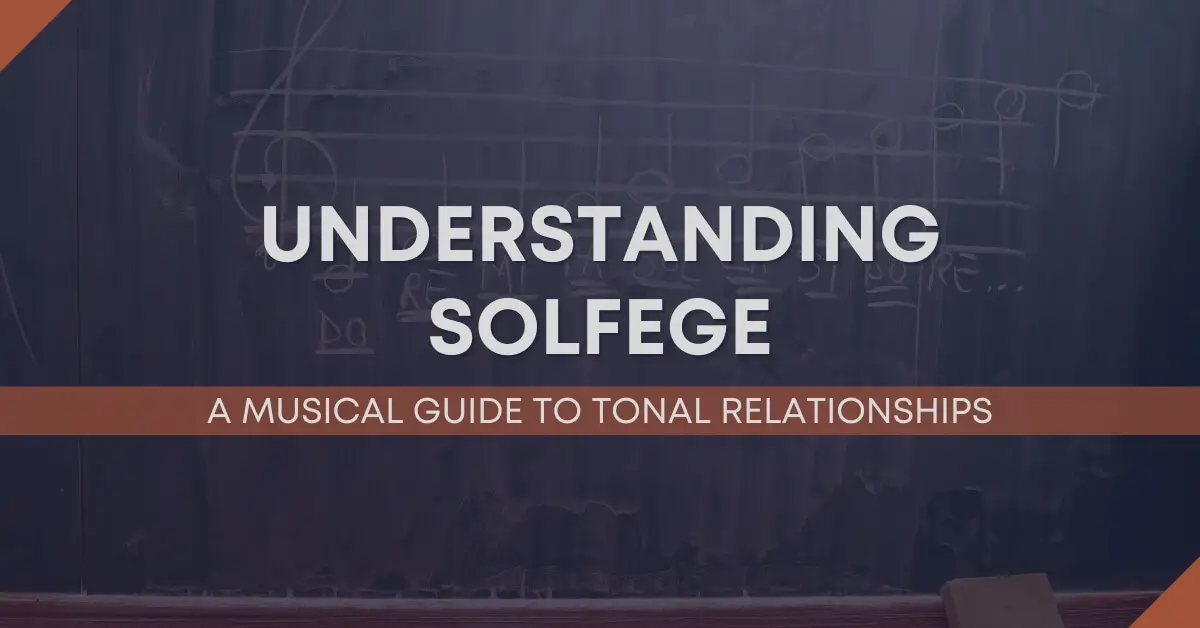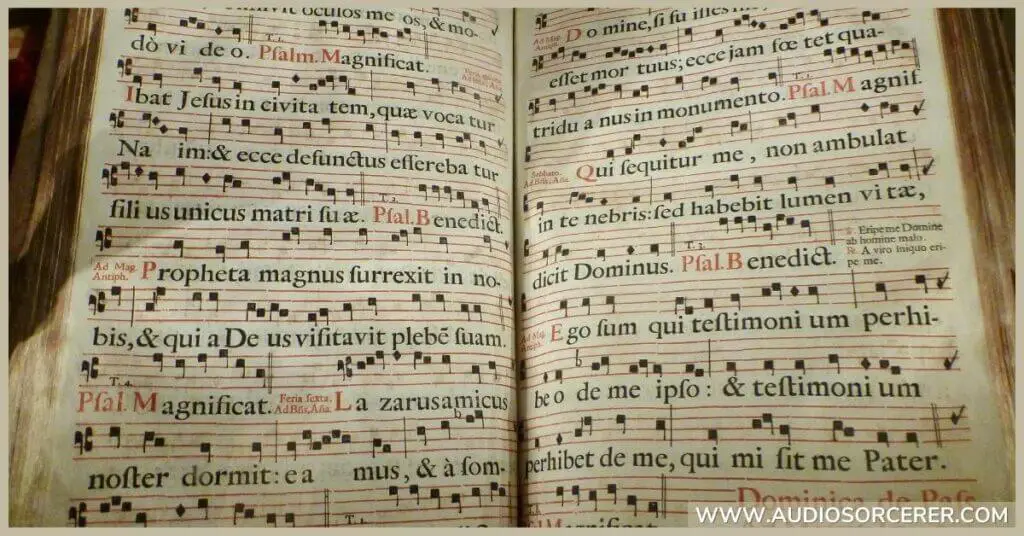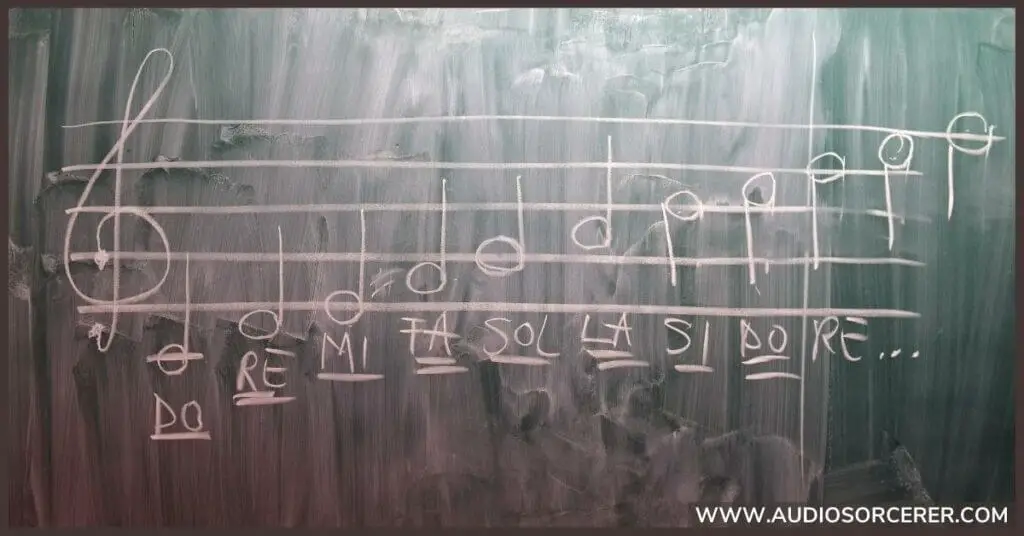
Discover the centuries-old system that has been a cornerstone of music education and communication worldwide. Solfege, developed by Italian monk Guido over a thousand years ago, is a powerful tool for musicians to comprehend the relationships between notes in a musical scale. With its syllabic approach, such as Do, Re, Mi, solfege helps develop a deep understanding of pitch and melody.
In this comprehensive guide, we will explore the history and evolution of solfege, delve into its principles and applications, and illuminate its significance within music. Whether you're a singer or instrumentalist, solfege can enhance your musicianship, ear training, and sight reading skills. So, let's journey into the world of solfege and unlock the ability to recognize patterns, identify intervals, and interpret sheet music with ease.

The foundations of solfege can be traced back to the 11th century and are often attributed to the Italian Benedictine monk, Guido of Arezzo. Guido developed a system called the “hexachordal system,” a precursor to solfege, to teach singing of Gregorian Chants. The hexachordal system employed six notes: ut, re, mi, fa, sol, and la, with “ut” later being replaced by “do” for ease of pronunciation, and “si” or “ti” added to complete the diatonic scale.
The original syllables, derived from the Latin hymn “Ut Queant Laxis,” were used to represent the different pitches in a hexachord. The first letters of each line of the hymn represented a different note of the hexachord, aiding in the memorization and singing of the pitches. This concept was revolutionary as it provided a tangible way to understand and visualize the abstract concept of musical pitch, thereby making music more accessible.
As music evolved and the use of seven-note scales became more prevalent, the hexachord system adapted, and the solfege system, as we know it today, emerged. It extended to encompass the entire scale and underwent various modifications and enhancements.
The Renaissance era saw the advent of the “Movable Do” system, where “Do” is the tonic of whatever key the music is in. This allowed for a better understanding of tonality and key relationships. The “Fixed Do” system, where “Do” is always equivalent to C, emerged as another approach, offering a consistent reference point for every note.
Different cultures embraced and adapted solfege to their unique musical traditions, and it became a pivotal part of music education worldwide. The solfege system is especially revered in non-English-speaking countries, where the “Fixed Do” system predominates. In contrast, English-speaking countries more commonly employ the “Movable Do” system due to its adaptability to various key signatures and its utility in teaching tonal relationships and scale structures.
Related Article: Singorama Review – The Best Online Singing Lessons?
There are two main systems of solfège: fixed Do and movable Do. In the United States and many other countries, solfège is commonly used with a movable Do, where Do is always the first note of the scale, regardless of the key signature. This system allows for a flexible understanding of pitch relationships, as Do can be any note depending on the key. On the other hand, fixed Do assigns specific syllables to individual notes, with the solfege syllable Do always representing the first scale degree C.
Both fixed Do and movable Do have their own advantages and disadvantages, making them suitable for different musical contexts. Let's take a closer look at the pros and cons of each system.
Fixed Do:
Movable Do:
Both systems of solfège have their merits, and the choice between fixed Do and movable Do ultimately depends on the preferences and needs of the musician or music educator. Some musicians may find the consistency of fixed Do advantageous, while others may appreciate the flexibility and relative pitch recognition offered by movable Do.

Solfège syllables serve as musical markers, each representing a note in the diatonic scale. The fundamental solfege syllables are Do, Re, Mi, Fa, Sol, La, and Ti, each corresponding to a specific tone in the scale.
These syllables act as stepping stones to understand the relational aspects and emotional qualities of different pitches in music. When applying solfege to different scales and modes, musicians adapt the syllables to the varying intervals, offering a versatile framework for exploring musical landscapes.
For notes not found in the diatonic scale, solfege employs additional syllables or modifications. For example:
These modifications enable musicians to navigate chromatic alterations and non-diatonic tones with precision and clarity.
By regularly practicing and applying these syllables to different pieces of music, musicians can internalize the tonal relationships within scales, enriching their musical expression, improvisation, and composition. It equips musicians with the ability to visualize and anticipate sound patterns, fostering a deep, intuitive connection with music across genres and styles.
Related Article: What Is The Circle Of 5ths? Music Theory Fundamentals
Solfege is not just a theoretical concept; it has numerous practical applications that serve beginners and seasoned musicians alike in various musical domains. Its practicality is demonstrated through its versatility, adaptability, and the depth it adds to musical understanding.
Solfege is a foundational element in music education. It provides a structured and systematic approach for students to understand musical notes, scales, and intervals, serving as an effective tool for instructors to teach musical theory and aural skills. The simplicity of solfege syllables makes them an excellent medium for conveying musical ideas, allowing students to grasp complex concepts with ease.
Solfege is invaluable for developing sight-singing abilities, enabling musicians to accurately interpret and perform music at first sight. It’s extensively used in choir practices and vocal training to enhance pitch accuracy and harmony. The association of syllables with pitches aids musicians in internalizing intervals and chords, honing their ability to recognize and reproduce sounds by ear.
Composers and arrangers often employ solfege to explore melodic ideas and harmonic structures. It allows them to visualize and experiment with musical elements, fostering creativity and innovation in developing motifs, themes, and harmonization. Solfege provides a coherent framework for analyzing and constructing compositions, facilitating the translation of musical imagination into tangible creations.
For those involved in jazz, blues, or any genre where improvisation is key, solfege offers a roadmap to navigate through complex chord progressions and modulations. Improvisers use solfege to internalize scales and modes, enabling them to weave melodic lines cohesively and spontaneously during performances, enhancing their expressivity and connection with the audience.
Musicians and musicologists utilize solfege when transcribing music and conducting analytical studies. It aids in identifying and notating musical phrases, themes, and structures, providing insights into compositional techniques and stylistic nuances. Solfege allows for a detailed examination of musical works, contributing to the broader understanding of musicology and musical interpretation.

Learning solfege is a step-by-step process that requires consistent practice and engagement. It can be self-taught, learned in a classroom setting, or with the guidance of a music instructor. Here’s a structured approach to learning solfege:
Related Article: What Are Music Modes?
The primary purpose of solfege is to teach musicians about pitch and to help them develop a strong sense of relative pitch, enabling them to understand musical intervals, melodies, and harmonies by ear.
No, the L is silent in Sol. It is pronounced liked the word 'so'.
No, solfege is not exclusive to singers. Instrumentalists also use solfege to improve their aural skills and understanding of music theory. It is a universal tool beneficial to all musicians, regardless of their instrument or vocal ability.
Solfege is versatile and can be adapted to various musical styles and genres. While it originated with diatonic scales, it can also be used to understand and interpret chromatic and modal music.
The time it takes to learn solfege can vary depending on individual learning pace, practice frequency, and musical background. Regular practice and consistent engagement can accelerate the learning process.
Solfege is a fundamental tool in music education and practice, grounding musicians in the understanding of tonal relationships and enhancing musical perception. Its simplicity and structure make it adaptable across various genres and essential for developing musicianship skills. Learning solfege opens up new avenues for musical exploration and expression, allowing for a deeper connection with music. In our constantly evolving musical landscape, solfege continues to be a relevant and invaluable resource for musicians of all levels.
If you found this guide helpful, consider subscribing to our blog for more music theory education, tips, and news. Also, you can support new content by contributing to our tip jar.
"Some of the links within this article are affiliate links. These links are from various companies such as Amazon. This means if you click on any of these links and purchase the item or service, I will receive an affiliate commission. This is at no cost to you and the money gets invested back into Audio Sorcerer LLC."